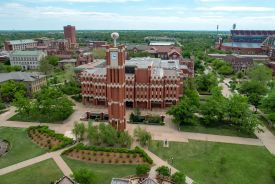Pop and alternative music are being recruited to serve science by helping track space junk, CNET reported.
Signals from FM broadcasters bounce off decaying satellites and other debris into the "ear" that is Murchison Widefield Array, a high-sensitivity radio telescope in western Australia.
The radio telescope, which launched earlier this year, is used to track space debris as small as 1 meter by observing how the objects reflect FM signals from Australian radio stations, Steven Tingay of Curlin University and director of the program told CNET.
"[It] could potentially save us billions of dollars by detecting and tracking hundreds of pieces of space junk every day," Tingay told The Australian. "There is a very real and costly danger of valuable satellites colliding with each other or with pieces of space junk."
Space junk is a serious threat as it threatens satellites and spacecraft and can plummet unpredictably to earth.
According to CNET, four years ago an Iridium Communications satellite collided with a defunct Russian satellite, creating a cloud of more than 2,000 bits of debris, which worried operators of other satellites as well as the International Space Station.
In early November, the European Space Agency's 1-ton Gravity field and steady-state Ocean Circulation Explorer, also known as GOCE, broke up and crashed back to Earth after spending four years in a low orbit precisely mapping the planet's gravity. Most of the satellite was incinerated in the atmosphere with bits hitting the southern Atlantic.
"Because the telescope has such a large field of view, monitoring vast patches of the sky at any given time, we can simultaneously image hundreds of these objects every day and track them for long enough to determine their orbits," Tingay said.
The Murchison Widefield Array, which is part of Western Australia's Murchison Radioastronomy Observatory, is a precursor to the international Square Kilometer Array radio telescope, according to CNET.
It consists of 2,048 individual antennas arranged in 128 formations of four-by-four tiles enabling it to pick up reflected waves from objects up to 620 miles away.
© 2025 University Herald, All rights reserved. Do not reproduce without permission.








